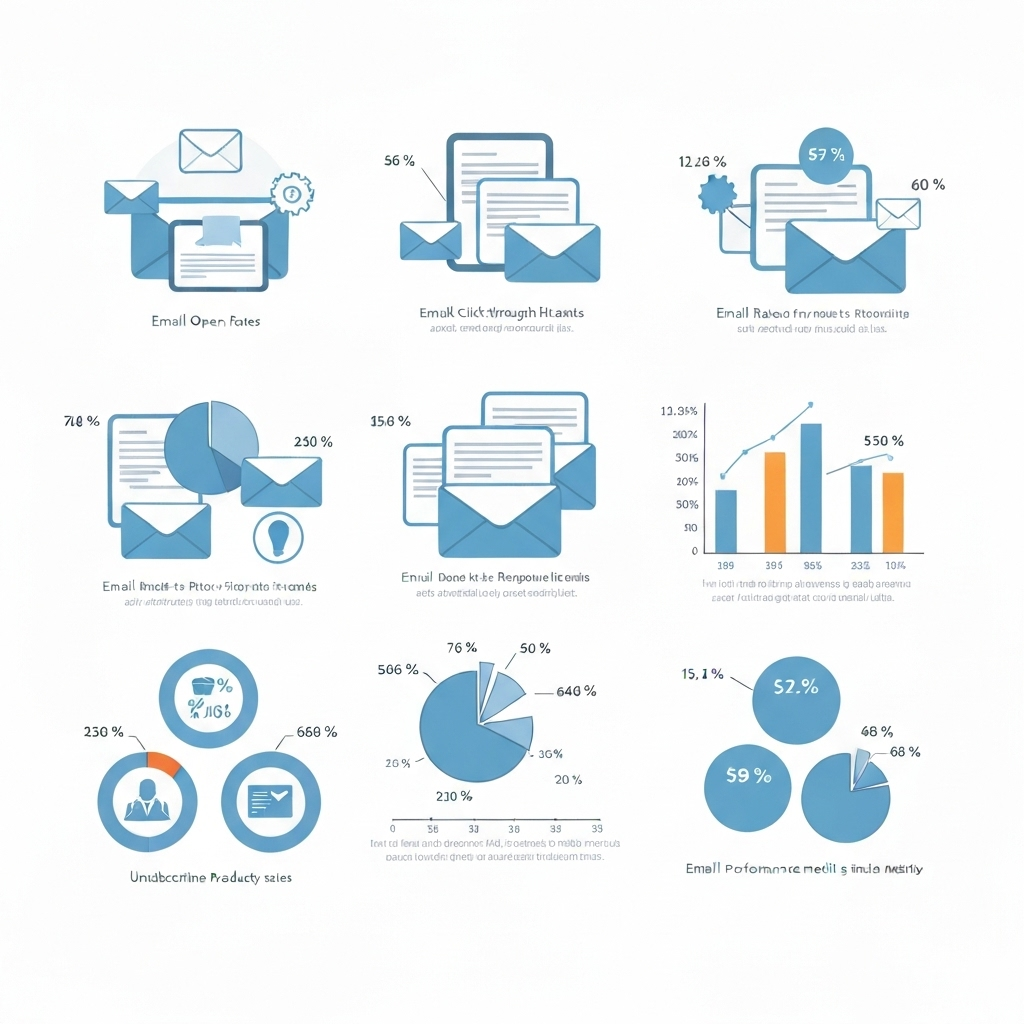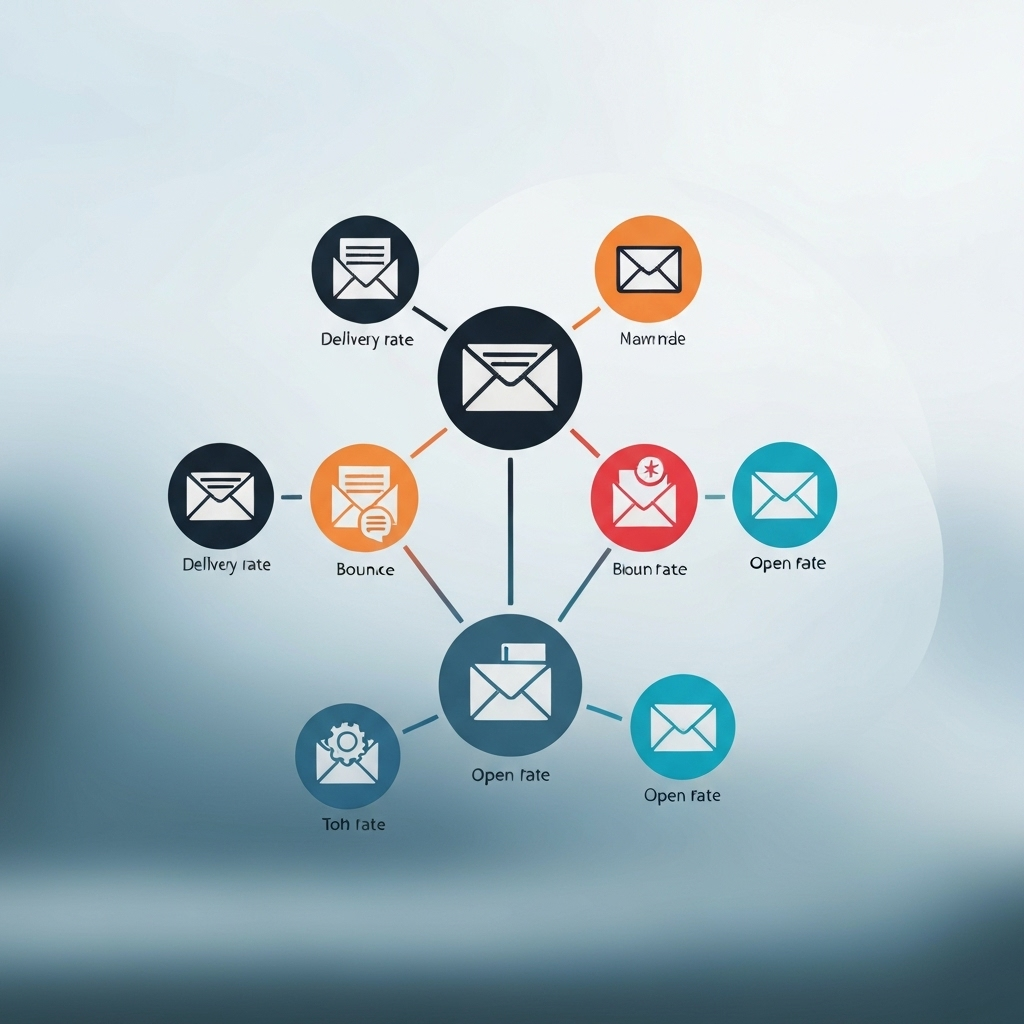Master Email Performance Metrics for Better Productivity

In today's fast-paced business world, email remains a cornerstone of communication, sales, and marketing. Yet, for many professionals, the inbox can feel like a black hole – a place where messages are sent but their impact is uncertain. Are your emails actually reaching your audience? Are they being read? Are they driving the desired actions? Without understanding the underlying performance, you're essentially flying blind, wasting precious time and resources. This is where mastering email performance metrics becomes not just beneficial, but essential for boosting productivity and achieving tangible business results.
The sheer volume of emails sent and received daily means that simply "sending an email" is no longer enough. To truly leverage the power of email, you need data. You need insights. You need to track, analyze, and optimize. This article will guide you through the critical world of email analytics, transforming raw email data into actionable intelligence that empowers sales professionals, marketers, entrepreneurs, and executives to make smarter decisions, improve email deliverability, and ultimately, drive greater productivity and growth.
Key Email Performance Metrics Explained
Understanding your email's journey from sender to recipient requires a deep dive into specific metrics. These aren't just abstract numbers; they are indicators of your email's effectiveness, your audience's engagement, and your sender reputation. Let's break down the most crucial email marketing metrics:
Open Rate
The open rate is perhaps the most commonly cited metric. It represents the percentage of recipients who opened your email after it was delivered. A healthy open rate typically indicates that your subject line and sender name are compelling enough to grab attention in a crowded inbox. According to Litmus, the open rate is "how many of your delivered emails were ‘opened.’ It’s great for gauging the effectiveness of subject lines, monitoring em..." (Litmus). However, it's important to note that open tracking relies on an image being loaded within the email, which isn't always 100% accurate, especially with privacy-focused email clients. Still, it remains a vital indicator of initial engagement.
Click-Through Rate (CTR)
While opening an email is a good first step, the real goal is often to get recipients to take a specific action, usually by clicking a link. The click-through rate (CTR) measures the percentage of recipients who clicked on one or more links within your email. A high CTR suggests your email content is relevant, engaging, and that your call-to-action (CTA) is clear and persuasive. As Klaviyo notes, "Email conversion rate measures the percentage of recipients who took action after they clicked on an email." (Klaviyo). For sales and marketing emails, this is where conversions often begin.
Bounce Rate
Bounce rate refers to the percentage of emails that couldn't be delivered to the recipient's inbox. There are two main types of bounces:
- Hard Bounces: These are permanent delivery failures, usually due to an invalid email address (e.g., typo, non-existent domain). High hard bounce rates severely damage your sender reputation.
- Soft Bounces: These are temporary delivery failures, such as a full inbox, server issues, or message size limits. While less critical than hard bounces, a consistent pattern of soft bounces can also indicate problems.
Monitoring bounce rates is crucial for maintaining list hygiene and ensuring good email deliverability. High bounce rates mean your messages aren't reaching potential customers, directly impacting your ROI.
Conversion Rate
This is the ultimate measure of success for many email campaigns. The conversion rate tracks the percentage of recipients who completed a desired action after clicking a link in your email – this could be making a purchase, filling out a form, downloading a resource, or signing up for a webinar. As Klaviyo states, "To calculate email conversion rate, divide total conversions by total email deliveries..." (Klaviyo). A strong conversion rate directly correlates with business objectives and demonstrates the tangible value of your email efforts.
Unsubscribe Rate
While a small number of unsubscribes is normal, a consistently high unsubscribe rate signals that your content might not be resonating with your audience, or you might be sending emails too frequently. It's an important signal for list health and audience relevance.
Spam Complaint Rate
This is one of the most damaging metrics. A spam complaint occurs when a recipient marks your email as spam. ISPs (Internet Service Providers) monitor this closely. A high spam complaint rate can lead to your emails being filtered into spam folders or even your sending IP being blacklisted, severely impacting email deliverability and overall campaign reach.
Forward/Share Rate
This metric indicates how many recipients forwarded your email to others or shared it via social media. A high forward/share rate is a strong sign of valuable, engaging content that resonates so much that recipients want to share it with their network, acting as a powerful form of organic reach.
The Role of Deliverability in Email Performance
Before any of the aforementioned metrics can even be measured, your email must first reach the recipient's inbox. This is the essence of email deliverability. If your emails land in the spam folder or are rejected outright, your open rates, CTRs, and conversion rates will be zero. Think of deliverability as the foundation upon which all other email analytics are built.
Several factors influence deliverability:
- Sender Reputation: This is built over time based on your sending history, engagement rates, and complaint rates. A good reputation is earned through consistent, valuable communication.
- List Quality: Sending to engaged, opted-in subscribers is paramount. Using purchased lists or sending to unverified addresses leads to high bounce rates and spam complaints. Maintaining list health is key to good email marketing metrics.
- Authentication: Proper setup of SPF, DKIM, and DMARC records authenticates your domain, signaling to mail servers that you are a legitimate sender.
- Content Quality: Overuse of spam trigger words, excessive capitalization, or misleading subject lines can flag your emails.
- Engagement: Consistent engagement from your subscribers (opens, clicks) signals to ISPs that your emails are wanted.
Understanding and actively managing your email deliverability is non-negotiable for any serious email strategy. Tools that provide inbox insights are invaluable here, helping you diagnose and fix issues that might be preventing your emails from reaching their intended destination.
For businesses concerned about the security and integrity of their email communications, exploring solutions like secure business email can offer an additional layer of protection and enhance overall email hygiene.
Benchmarking Your Email Performance: Setting Realistic Goals
You've started tracking your metrics, but how do you know if you're doing well? This is where email benchmarking comes into play. Benchmarking involves comparing your email performance data against industry averages, competitors, or your own historical performance to identify areas for improvement and set realistic goals.
Why Benchmark?
- Identify Gaps: See where your performance falls short compared to industry standards.
- Set Targets: Establish achievable goals for improving metrics like open rates and CTRs.
- Measure Progress: Track your improvement over time and understand the impact of your optimization efforts.
- Gain Competitive Insight: Understand how you stack up against peers in your sector.
How to Benchmark:
- Industry Averages: Research average email marketing metrics for your specific industry. Resources like Litmus and MailerLite often publish annual reports.
- Competitor Analysis: While direct access to competitor data is rare, you can infer performance through their email frequency, content quality, and promotional offers.
- Historical Data: The most valuable benchmark is often your own past performance. Aim to beat your previous campaigns.
An effective email optimization program examines past performance to identify opportunities for improvement, ensuring your email marketing efforts continue to deliver results. (Ongage). Setting specific, measurable, achievable, relevant, and time-bound (SMART) goals based on your benchmarks will provide a clear roadmap for enhancing your email outreach.
Analyzing Email Data: From Raw Numbers to Actionable Insights
Collecting metrics is only half the battle. The real power lies in analyzing this data to extract actionable insights that drive improvements. Raw numbers alone don't tell you *why* your open rate is low or *why* your CTR is underperforming. Effective analysis requires a deeper look:
- Segmentation is Key: Don't look at your overall metrics. Segment your data by audience type (e.g., new subscribers vs. loyal customers), campaign type (e.g., promotional vs. newsletter), geographic location, or even the device they used to open the email. This granular view reveals specific trends and pain points.
- A/B Testing: This is your best friend for optimization. Test different subject lines, sender names, CTAs, email copy, images, and send times. Analyze which variations perform best for different segments. For instance, testing two subject lines can reveal which phrasing resonates more, directly impacting your open rates.
- Correlation, Not Just Causation: Understand how different metrics influence each other. A low open rate might be due to a poor subject line, which in turn affects the CTR. A high bounce rate will naturally suppress your open and click rates.
- Content Performance: Which emails or types of content generate the most clicks? Which ones lead to conversions? Analyze the content itself – is it valuable, relevant, and well-formatted?
- Timing Matters: When are your subscribers most likely to open and engage? Analyze engagement patterns based on the day of the week and time of day.
Turning raw data into actionable insights requires a systematic approach. It's about asking "why" and then testing hypotheses to find solutions. For those looking to streamline this process and gain deeper understanding, an AI app can be a game-changer, automating data aggregation and pattern recognition.
How AI Can Automate and Enhance Email Performance Tracking
The complexity and sheer volume of email communication often make manual tracking and analysis of email performance metrics an overwhelming task. This is where Artificial Intelligence (AI) steps in, revolutionizing how we approach email analytics and boost AI email productivity.
AI-powered tools can:
- Automate Data Collection: AI platforms can seamlessly integrate with your email service providers and CRM systems to automatically collect and consolidate data from all your campaigns, saving countless hours of manual work.
- Identify Patterns and Trends: AI algorithms can sift through vast amounts of data to identify subtle patterns, correlations, and trends that might be missed by human analysts. This includes predicting optimal sending times, identifying high-performing content types, and segmenting audiences based on complex engagement behaviors.
- Predictive Analytics: AI can predict future performance based on historical data, helping you anticipate campaign success, identify potential issues before they arise, and forecast engagement levels.
- Personalization at Scale: AI can analyze recipient data to personalize email content, subject lines, and offers at an individual level, significantly improving engagement metrics like open rates and click-through rates.
- Deliver Actionable Recommendations: Instead of just presenting data, AI tools can offer concrete, data-driven recommendations on how to improve specific metrics, optimize subject lines, or refine your content strategy.
- Enhance Deliverability Monitoring: AI can monitor sender reputation, identify potential deliverability issues, and even help manage bounce lists more efficiently, providing crucial inbox insights.
For professionals drowning in email, leveraging advanced tools is key. Consider using an ai executive assistant to manage your email communications, automate routine tasks, and provide intelligent insights into your email performance. These solutions can transform your inbox from a productivity drain into a strategic asset.
This ability to automate and analyze complex data sets directly contributes to enhanced AI email productivity, allowing professionals to focus on strategy rather than data wrangling. It's a significant step towards making email management smarter and more effective, much like how advanced tools can improve your overall business communications, as seen in discussions about AI in customer communications.
Leveraging MailToPie for Superior Email Performance Insights
In the quest to master email performance metrics and drive efficiency, specialized platforms offer unparalleled advantages. MailToPie is designed to cut through the noise, providing clear, actionable email analytics and deep inbox insights.
By harnessing AI, MailToPie can:
- Automate Complex Tracking: It automatically gathers and analyzes key email marketing metrics such as open rates, click-through rates, bounce rates, and conversion rates across your various communication channels.
- Provide Predictive Insights: Go beyond historical data to understand what's likely to work in the future. MailToPie's AI can predict engagement patterns and suggest optimizations for better results.
- Enhance Deliverability Management: It helps identify potential issues affecting your email deliverability, ensuring your messages reach the intended inboxes more reliably.
- Offer Actionable Recommendations: Receive clear, data-driven suggestions for improving subject lines, optimizing content, and refining your audience segmentation to boost performance.
- Streamline Workflow: By automating routine analysis and providing clear reports, MailToPie frees up your time, allowing you to focus on strategic decision-making and execution, thereby boosting overall productivity.
Leveraging a platform like MailToPie means you're not just looking at numbers; you're gaining a strategic advantage. It transforms your understanding of email performance, enabling you to make informed decisions that directly impact your bottom line and overall business efficiency, similar to how improving reply speed ROI can yield significant business benefits.
Conclusion: Driving Business Growth with Data-Driven Email Strategies
In an era where every minute counts, optimizing your email strategy is paramount for productivity and growth. By diligently tracking and analyzing key email performance metrics – from open rates and click-through rates to email deliverability and conversion rates – you gain the visibility needed to understand what's working and what isn't.
Benchmarking your performance against industry standards and your own historical data provides the context necessary for setting actionable goals. The true transformation, however, comes from turning these insights into concrete improvements. This is where the power of AI becomes indispensable, automating complex analysis, identifying trends, and offering personalized recommendations to enhance your AI email productivity.
Embracing data-driven decision-making for your email communications is no longer optional; it's a necessity for staying competitive. Tools and platforms that offer robust email analytics and deliver clear inbox insights empower you to refine your strategies, connect more effectively with your audience, and achieve your business objectives. Start measuring, start analyzing, and start optimizing today to unlock the full potential of your email outreach and drive sustainable business growth.



